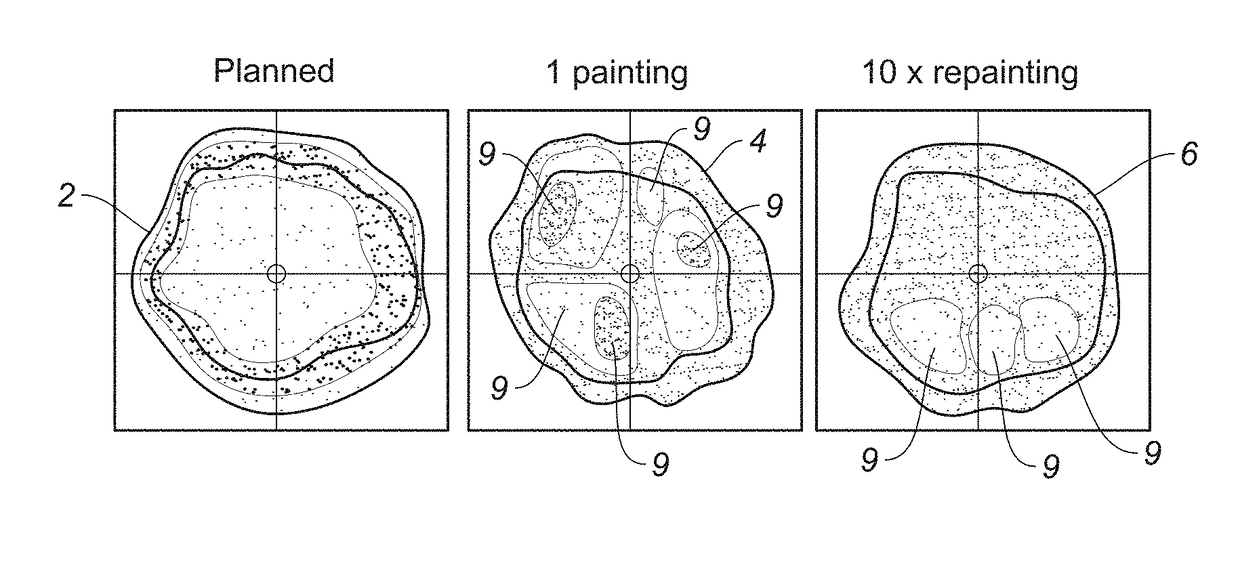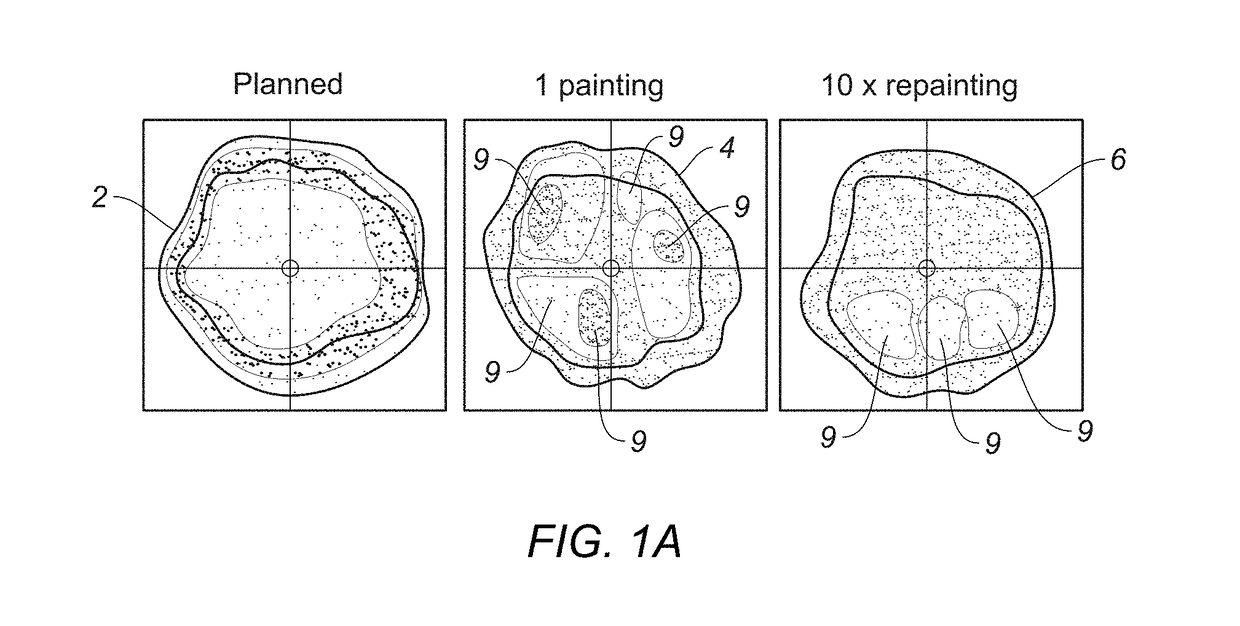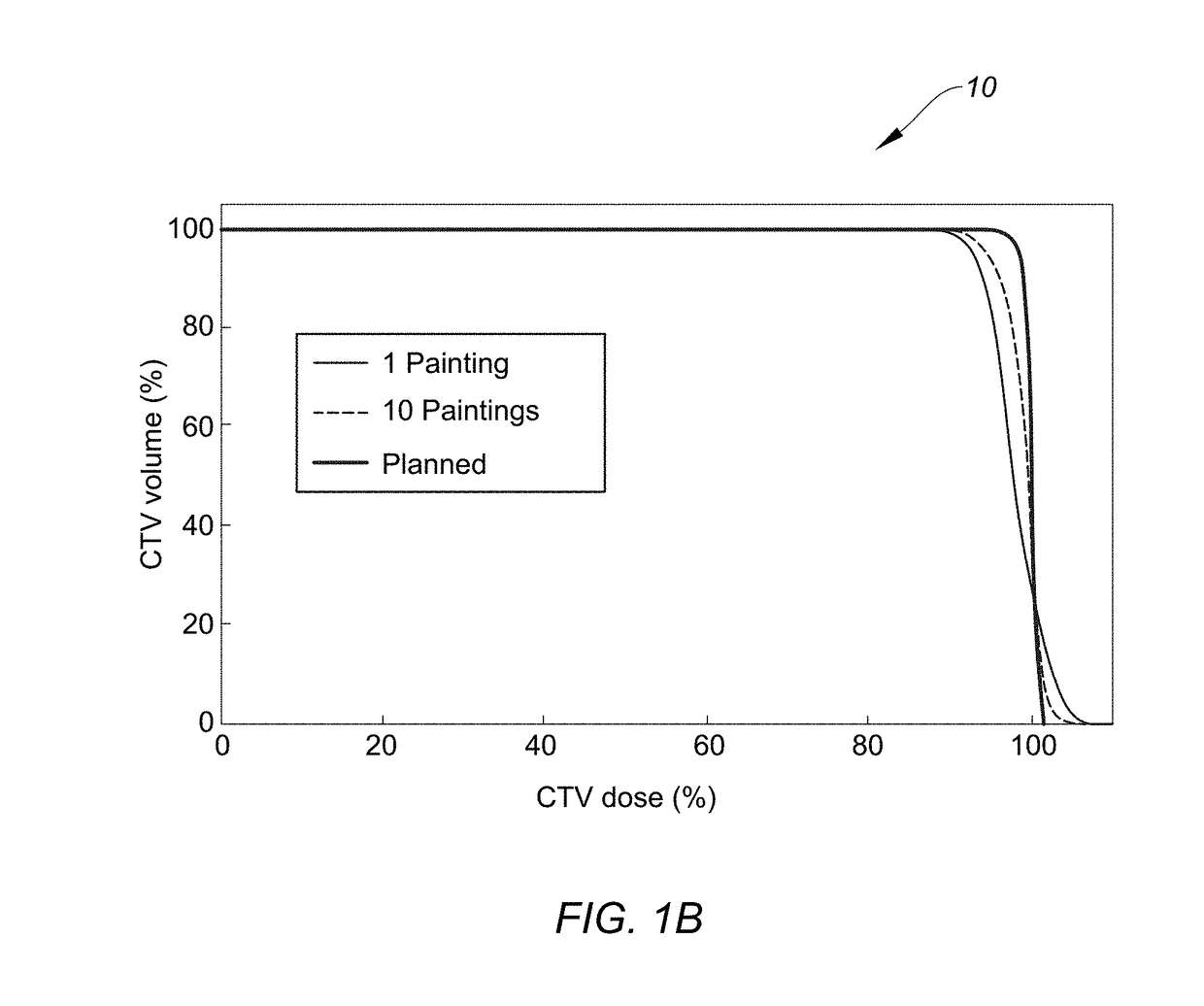Mitigation of interplay effect in particle radiation therapy
a particle radiation therapy and interplay technology, applied in radiation therapy, x-ray/gamma-ray/particle-irradiation therapy, therapy, etc., can solve the problem of severe local underdosage and/or overdosage inside the treatment target volume, and the interplay effect is more serious, so as to reduce the interplay effect.
- Summary
- Abstract
- Description
- Claims
- Application Information
AI Technical Summary
Benefits of technology
Problems solved by technology
Method used
Image
Examples
Embodiment Construction
[0039]Reference will now be made in detail to embodiments, examples of which are illustrated in the accompanying drawings. While the disclosure will be described in conjunction with these embodiments, it should be understood that they are not intended to limit the disclosure to these embodiments. On the contrary, the disclosure is intended to cover alternatives, modifications and equivalents, which may be included within the spirit and scope of the disclosure as defined by the appended claims. Furthermore, in the following detailed description, numerous specific details are set forth in order to provide a thorough understanding. However, it will be recognized by one of ordinary skill in the art that embodiments may be practiced without these specific details.
[0040]Although the description will focus on proton radiation therapy and proton pencil beam scanning (PBS) therapy, the description is also applicable to particle radiation therapy that uses neutrons, ions, or electrons. The pr...
PUM
 Login to View More
Login to View More Abstract
Description
Claims
Application Information
 Login to View More
Login to View More - R&D
- Intellectual Property
- Life Sciences
- Materials
- Tech Scout
- Unparalleled Data Quality
- Higher Quality Content
- 60% Fewer Hallucinations
Browse by: Latest US Patents, China's latest patents, Technical Efficacy Thesaurus, Application Domain, Technology Topic, Popular Technical Reports.
© 2025 PatSnap. All rights reserved.Legal|Privacy policy|Modern Slavery Act Transparency Statement|Sitemap|About US| Contact US: help@patsnap.com



